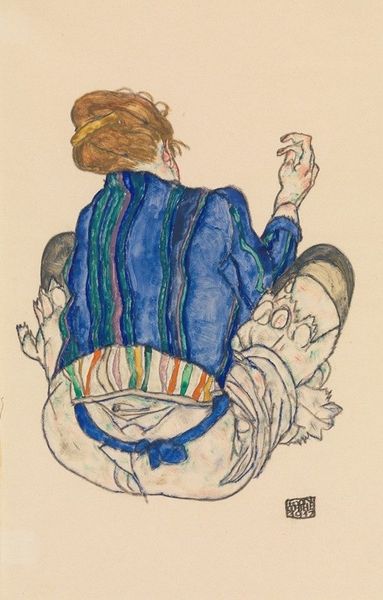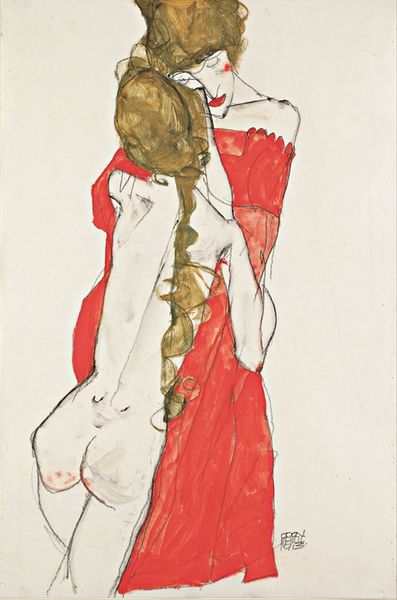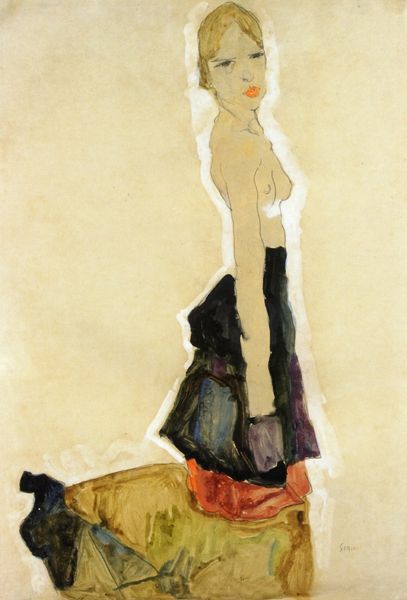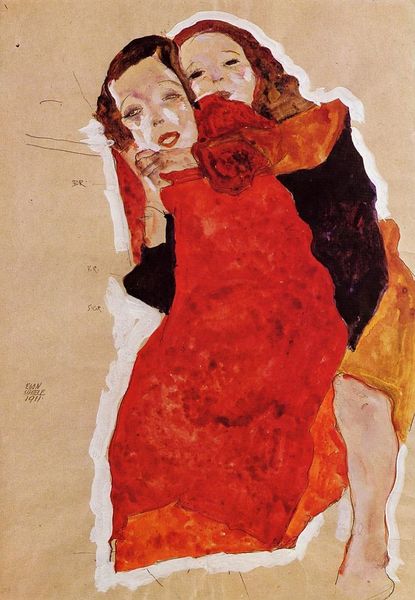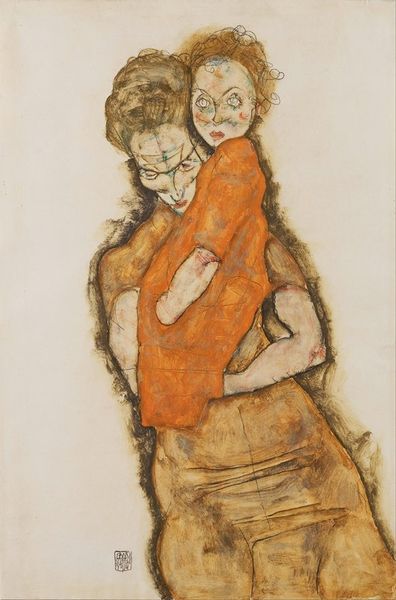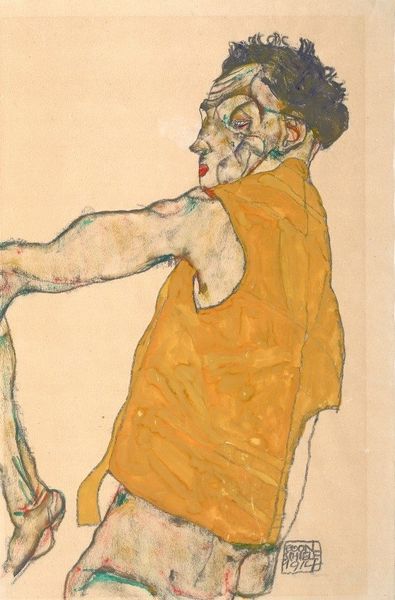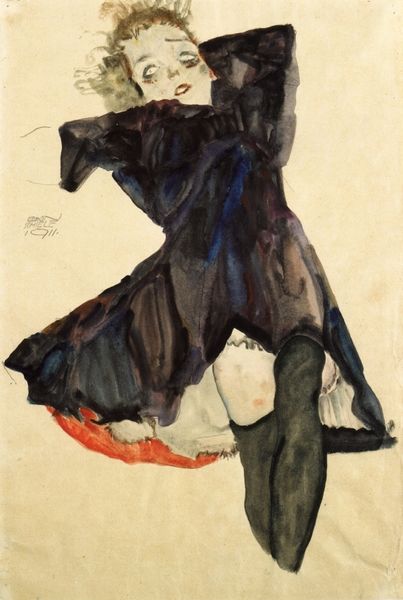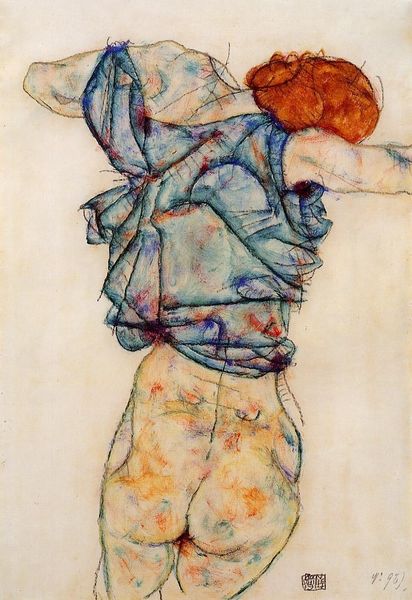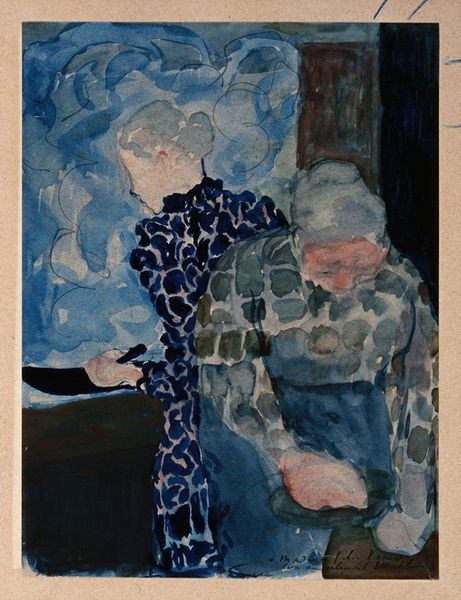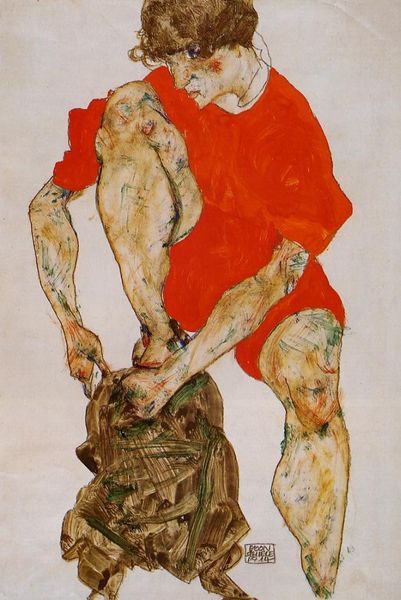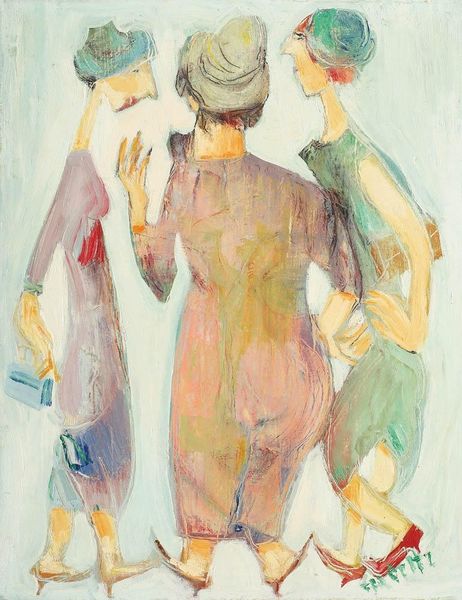
painting, oil-paint
#
portrait
#
figurative
#
self-portrait
#
painting
#
oil-paint
#
figuration
#
oil painting
#
expressionism
#
modernism
Copyright: Public Domain: Artvee
Egon Schiele created this unsettling watercolor and pencil work, Lovers, around the turn of the century in Austria. Schiele was active during a pivotal moment when Vienna was shedding its imperial past and grappling with modernity, reflected in the figures' strained poses and stark emotionality. The image creates meaning through its unconventional portrayal of intimacy. Schiele's use of distorted figures and raw lines challenges the conservative artistic norms of the time. The woman’s averted gaze hints at the social constraints placed on women, while the man's looming presence suggests the power dynamics at play. Schiele’s raw and unflinching style reflects the Expressionist movement's broader critique of bourgeois society. Art historians consult various resources to better understand Schiele's world, including contemporary periodicals, exhibition catalogs, and personal letters, to better contextualize this artwork within the social and institutional forces that shaped its creation. This reveals the contingent nature of art and its ongoing dialogue with the society in which it was created.
